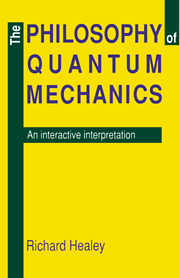Summary
THE HIERARCHY OF QUANTUM SYSTEMS
It is frequently noted that some quantum systems are composed of others – their subsystems: For example, a hydrogen atom is composed of a proton and an electron, and an α-particle is composed of two protons and two neutrons. It is less frequently noted that all such quantum systems may also be thought of as subsystems of more extensive systems: Thus, any ten α-particles constitute a quantum system, no matter how widely dispersed – and indeed this system has the important property that its quantum state is required to be symmetric under exchange of any pair of α-particles. In the context of nonrelativistic quantum mechanics, it is reasonable to assume that there is a fixed set of quantum systems, none of whose members has any nontrivial subsystems (i.e., none except itself and the null subsystem Ø, which is a subsystem of every quantum system); any system in this set will be called atomic (note that atoms are not atomic quantum systems in this sense – even a hydrogen atom is composed of an electron and a proton: An electron may be atomic in this sense, but the assumption that it is forms no part of quantum mechanics). All atomic systems together compose the universal quantum system ω, which may be finite or infinite, depending on the total number of atomic systems.
- Type
- Chapter
- Information
- The Philosophy of Quantum MechanicsAn Interactive Interpretation, pp. 63 - 83Publisher: Cambridge University PressPrint publication year: 1989



